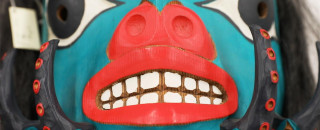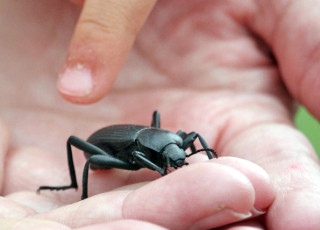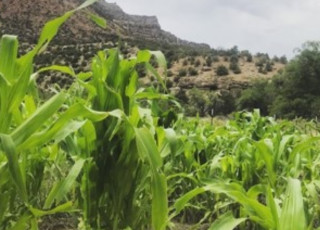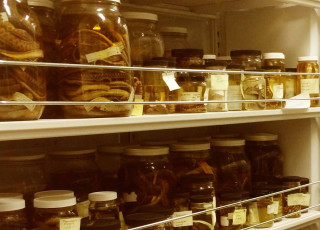Peeking Behind the Masks We Make
Tlingit Octopus Otter mask. ©NHMU
By Riley Black
Masks are part of our everyday lives now. Whether we're going out to eat or meeting up with friends, putting on a mask has become one of the most important things we can do to protect people around us - and ourselves - during the COVID-19 pandemic. But wearing masks for safety from a pathogen is just one way people have used masks across time and space. People might wear masks as an indicator of their identity as a person or with a cultural group, to represent another being or as part of a healing ceremony or as a warning, and innumerable other variations. Wearing masks, notes NHMU Curator of Ethnography Alex Greenwald, is a human universal.

NHMU maintains a collection of masks made by different Indigenous cultures. Each represents different facets of the time, place, and society it was made in, from what it represents to the materials the mask is made of. "People are profoundly impacted by the environment or ecology where they live," Greenwald says, with available materials translating into different designs. One of the masks in the Museum collections was made by the Iroquois out of corn husks. This kind of mask, Greenwald notes, is used in healing ceremonies for physical or spiritual maladies. A different mask, made by the Inuit, was created by stretching hide from local animals over a wood face-shaped mold. The materials available to people in different places and times help shape the forms masks take.
Wearing a mask is not merely about putting on a piece of clothing or costume. "When you don a mask," Greenwald says, "you are inhabiting or being inhabited by that sprit, by that ancestor, the animal or animals the mask is representing." It's a transformative experience that plays many different roles across human cultures.
Some of these masks play healing roles. Another in the collection, a depiction of the Wild Man of the Woods from the Pacific Northwest, represents loved ones who were lost to the sea or the woods. Another mask from the region depicts a combination of otter and octopus features, animals that have strong connections to cultural identity. Each mask has its own identity and relationship to the wearer and their kinship group.
"My hope," Greenwald says, "is to show people that wearing masks is not a new or a bad thing." In fact, it's a shared part of humanity that people have turned to for a litany of reasons. Think about that the next time you put on a mask for whatever reason. What does that mask say about you and your relationship to those around you?
This post is presented as part of the 2021
Behind the Scenes Reimagined series.
Riley Black is the author of Skeleton Keys, My Beloved Brontosaurus, Prehistoric Predators, and a science writer for the Natural History Museum of Utah, a part of the University of Utah in Salt Lake City. Our mission is to illuminate the natural world and the place of humans within it. In addition to housing outstanding exhibits for the public, NHMU is a research museum. Learn more.



